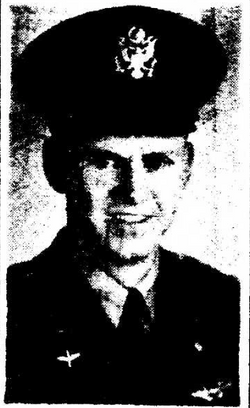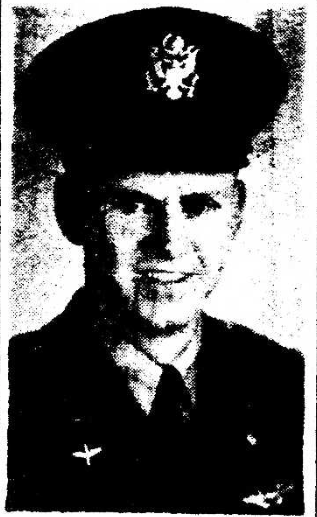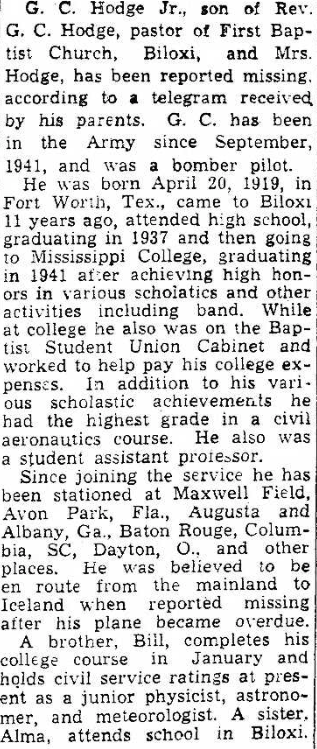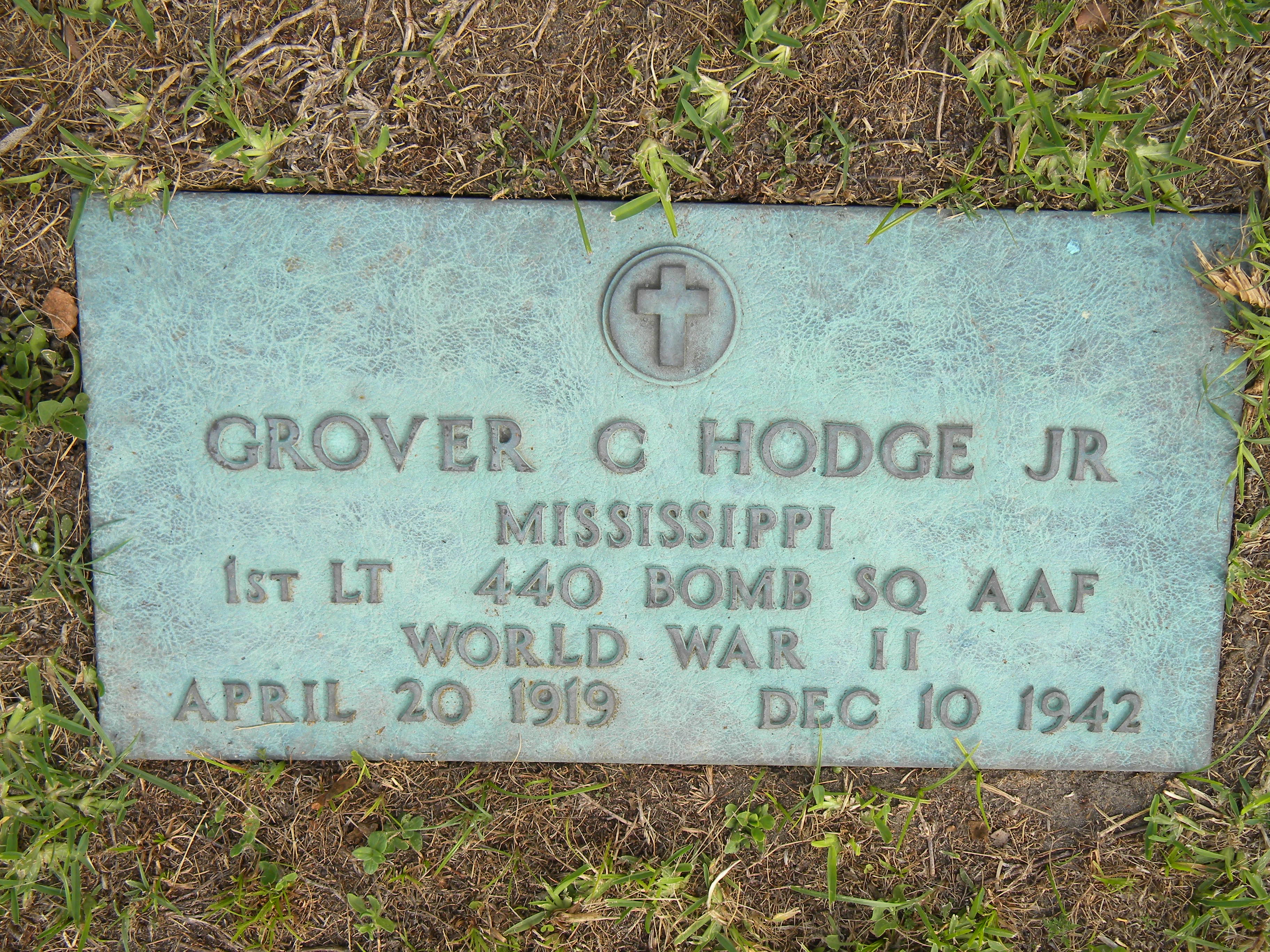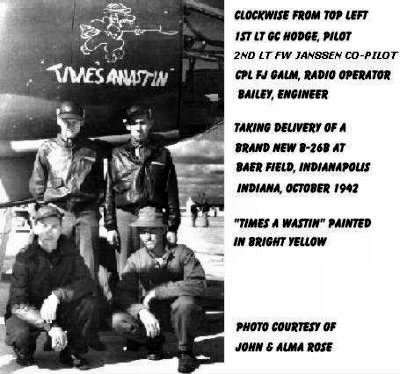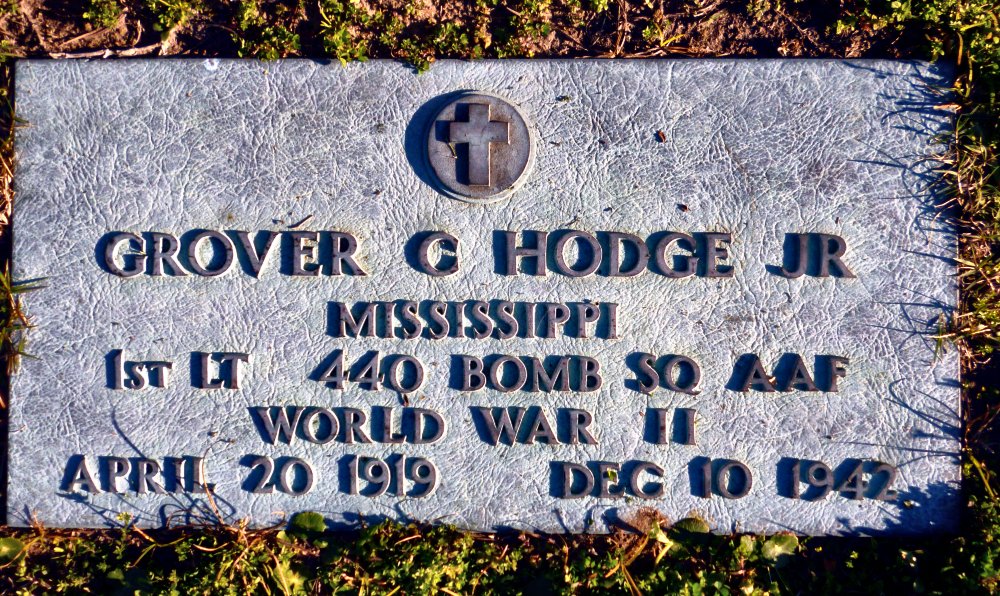Grover was survived by his parents; William T. Hodge (b. 1923), a brother, and Alma L. Hodge (b. 1930), his sister.
B26 crash - Hebron/Saglek Bay, Labrador - Nov 30, 1942
December 13, 2008 | Mount Albert, Ontario, Canada
1st. Lt Grover C. Hodge Jr. was pilot in command of the 319th Bombardment Group's 'Time'a-Wastin'', a B26 Martin 'Marauder' light bomber which crashed after running out of fuel near Saglek Bay, Labrador, on November 30th, , 1942. The story has been a complex research job.
As best as can be gathered, Hodge and his crew (Co-pilot 2nd Lt. Paul W. Janssen; Eng/Gunner Bailey -no first name avail.- ; Radioman/Gunner Frank J. Galm) picked up their aircraft in Presquile, Maine.
The crew manifest is misleading since three other crew members are noted in the aircraft's log, one by the name of 'Nolan', one by the name of 'Weyrauch', and the other by the name of Lt 'Manny' Josephson. Nolan and another crew member vanished after taking the aircraft's life raft down the nearby fjord and then down the coast of the Labrador Sea in an attempt to secure rescue from Goose Bay.
Josephson is variously noted in period documents as a bombardier and, for the last flight, navigator.
The aircraft was originally tasked to anti-submarine warfare (ASW) patrol in Bermuda but at the last moment was re-tasked to become part of Ferry Command's programme to supply combat aircraft for the British war effort.
After removing the aircraft's armaments, it flew to Goose Bay via Quebec City, then to Bluie West One, the US airstrip on the SW coast of Greenland. Unable to continue because of weather, the aircraft returned to Labrador but got lost due to failure of the magnetic and radio compasses.
Hodge managed to ditch the aircraft without injury to any of the crew. They survived horrific conditions for over a month until, after their deaths, they were found by a small group of Eskimo hunters.
[from www.fold3.com/page/83987751_grover_c_hodge_jr/]
REFERENCES:
The Sun Herald, 'Mrs. Alma Simmons Hodge', June 29, 1995, p. C2.
Grover was survived by his parents; William T. Hodge (b. 1923), a brother, and Alma L. Hodge (b. 1930), his sister.
B26 crash - Hebron/Saglek Bay, Labrador - Nov 30, 1942
December 13, 2008 | Mount Albert, Ontario, Canada
1st. Lt Grover C. Hodge Jr. was pilot in command of the 319th Bombardment Group's 'Time'a-Wastin'', a B26 Martin 'Marauder' light bomber which crashed after running out of fuel near Saglek Bay, Labrador, on November 30th, , 1942. The story has been a complex research job.
As best as can be gathered, Hodge and his crew (Co-pilot 2nd Lt. Paul W. Janssen; Eng/Gunner Bailey -no first name avail.- ; Radioman/Gunner Frank J. Galm) picked up their aircraft in Presquile, Maine.
The crew manifest is misleading since three other crew members are noted in the aircraft's log, one by the name of 'Nolan', one by the name of 'Weyrauch', and the other by the name of Lt 'Manny' Josephson. Nolan and another crew member vanished after taking the aircraft's life raft down the nearby fjord and then down the coast of the Labrador Sea in an attempt to secure rescue from Goose Bay.
Josephson is variously noted in period documents as a bombardier and, for the last flight, navigator.
The aircraft was originally tasked to anti-submarine warfare (ASW) patrol in Bermuda but at the last moment was re-tasked to become part of Ferry Command's programme to supply combat aircraft for the British war effort.
After removing the aircraft's armaments, it flew to Goose Bay via Quebec City, then to Bluie West One, the US airstrip on the SW coast of Greenland. Unable to continue because of weather, the aircraft returned to Labrador but got lost due to failure of the magnetic and radio compasses.
Hodge managed to ditch the aircraft without injury to any of the crew. They survived horrific conditions for over a month until, after their deaths, they were found by a small group of Eskimo hunters.
[from www.fold3.com/page/83987751_grover_c_hodge_jr/]
REFERENCES:
The Sun Herald, 'Mrs. Alma Simmons Hodge', June 29, 1995, p. C2.
